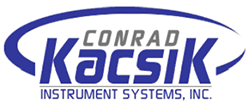 Any business handling heat treating for aerospace customers is likely to face Nadcap audits. Manufacturers like Boeing and Airbus require Nadcap accreditation, so the vast supply chain of subcontractors handling aerospace products must meet and maintain Nadcap requirements.
Any business handling heat treating for aerospace customers is likely to face Nadcap audits. Manufacturers like Boeing and Airbus require Nadcap accreditation, so the vast supply chain of subcontractors handling aerospace products must meet and maintain Nadcap requirements.
Get the Details Right
You need a solid foundation of pyrometry knowledge to comprehend and implement the AMS2750E specification. Even then, it’s critical to read the AMS2750E specification very carefully and understand it in detail before trying to implement it.
Given that AMS2750E requirements can be complex and multifaceted, it can be helpful to break down each task after a careful reading. This can be done by “bubbling” a blueprint or assigning a sequential number to each requirement. The number can be logged onto a form that contains the designated number, its associated requirements, the subsequent result and an accept/reject notice.
To ensure Nadcap audit success, I recommend bubbling the specification itself. Identify each requirement of the specification and assign it a sequential number. Be sure to capture all the requirements, which can be tricky. The sample paragraph below contains multiple requirements that would each need its own sequential number:
AMS2750E PG 19, PARA 3.4.5.1:
“The displayed temperature indication and/or recording of the sensor being tested as used in production, with appropriate offsets or correction factors, at any operating temperature, shall be compared with the corrected temperature indication of the test sensor on a test instrument.”
Believe it or not, this one paragraph has seven specifications, identified here:
-
The displayed temperature indication
-
and/or recording of the sensor being tested
-
as used in production
-
with appropriate offsets or correction factors [option for either]
-
at any operating temperature
-
shall be compared with the corrected temperature indication of the test sensor
-
on a test instrument
Breaking down all of AMS2750E, I found 513 characteristic requirements, including tables and figures. To pass a Nadcap audit, you must account for every one that applies to your operations. This is why a keen understanding of pyrometry is so important for conforming with AMS2750E requirements.
Help With AMS2750E
If this all seems a bit daunting, it doesn’t have to be. Preparation is important, and there are several courses and providers that offer assistance in understanding AMS2750E. The benefits of that instruction extend beyond passing audits. You’ll be better able to calibrate an instrument, perform a system accuracy test, prepare for a temperature uniformity study and much more after fully understanding AMS2750E.
I offer this training through Conrad Kacsik, and there are other good providers. Just be sure to choose a course that tailors the material to your specific operation as it relates to AMS2750E. The best pyrometry training comes from engineers who have performed work in accordance with AMS2750E and has practical experience manufacturing heat treated hardware and with actual Nadcap audits. Real-world knowledge is invaluable.
If you have any questions about AMS270E, Nadcap audits, Nadcap accreditation or heat treating in general, please reach out to Conrad Kacsik.
To read more of Jason's articles related to Nadcap heat treat audits and pyrometry, you can visit his articles at HeatTreatToday.com as well as Thermal Processing Magazine.









